When it comes to marketing, forecasting helps businesses make smarter decisions by predicting future outcomes. The key is understanding the difference between short-term and long-term forecasting – and when to use them.
Key Insights:
- Short-Term Forecasting: Focuses on immediate goals (days to a year). Useful for quick adjustments, campaign tweaks, and meeting short-term sales targets.
- Long-Term Forecasting: Looks at broader trends (years to decades). Helps with strategic planning, resource allocation, and market positioning.
Why It Matters:
- Striking a balance is critical: Experts recommend 60% investment in long-term brand building and 40% in short-term sales activation.
- Ignoring either approach can hurt growth. For example, stopping advertising for a quarter risks losing 2% of future revenue.
Quick Comparison:
| Aspect | Short-Term Forecasting | Long-Term Forecasting |
|---|---|---|
| Time Frame | Days to weeks | Months to years |
| Focus | Immediate metrics (e.g., conversions) | Market evolution, growth potential |
| Flexibility | Adapts quickly to changes | Slower but more strategic |
| Best For | Tactical decisions, quick fixes | Strategic planning, budgeting |
Related video from YouTube
Short-Term Marketing Forecasts
Short-term marketing forecasts cover periods ranging from a few days to a year, focusing on immediate market conditions and quick opportunities. This approach works alongside long-term strategies, allowing marketers to adjust campaigns on the fly.
Time Periods and Features
Short-term forecasting revolves around daily, weekly, and quarterly activities. To account for seasonal trends and market shifts, collecting data for at least 12–16 weeks is recommended . Here’s how different timeframes are typically used:
| Forecast Period | Primary Focus | Key Applications |
|---|---|---|
| Daily to Weekly | Tactical decisions | Campaign tweaks, A/B testing |
| Monthly | Performance tracking | Budget shifts, channel allocation |
| Quarterly | Short-term goals | Sales targets, promotional plans |
Reliable data collection is essential for these forecasts, supported by various analytical tools.
Data Collection and Tools
Accurate forecasting depends on gathering and analyzing data from sources like CRM systems, GA4, Ahrefs, and top market research platforms. These tools help marketers make informed predictions.
"Companies that consider external data, such as weather patterns, consumer spending power, and employment rates, achieve ‘significant business results.’" – Doug Laney, Data Expert and Former Analyst at Gartner
Take ACKO, an InsurTech company, as an example. They use Amplitude to compare marketing campaign results against forecasted expectations. This method helps them evaluate the impact of their efforts on website traffic and sales .
Benefits and Drawbacks
Short-term forecasting offers both advantages and challenges, as outlined below:
| Aspect | Benefits | Drawbacks |
|---|---|---|
| Accuracy | Precise near-term predictions | Vulnerable to sudden market changes |
| Implementation | Quick to measure and adapt | May ignore long-term trends |
| Resource Planning | Efficient for immediate allocation | Limited strategic scope |
| Decision Making | Supports fast tactical responses | Can lead to a short-term mindset |
Time-series methods are often more dependable than qualitative approaches for short-term forecasts . Experts suggest updating these forecasts weekly, with a focus on hour-by-hour breakdowns for the upcoming week to maintain accuracy in fast-changing conditions .
To create measurable business outcomes, marketers should define clear objectives. For example, goals might include "improving paid ad conversion rates in Q2" or "increasing MQLs from organic traffic by the end of the quarter" .
Long-Term Marketing Forecasts
Long-term forecasts, spanning several months to years, help businesses plan strategies and allocate resources effectively. They provide insights into future market trends and customer behavior, enabling better decision-making over extended periods.
Time Periods and Focus Areas
These forecasts are designed to analyze how markets evolve over time, focusing on strategic objectives and long-term consumer trends. Unlike short-term predictions, they consider broader factors like industry shifts and economic patterns .
| Time Horizon | Strategic Focus | Key Considerations |
|---|---|---|
| 1–2 Years | Market positioning | Industry trends, competitive shifts |
| 2–5 Years | Growth planning | Economic cycles, tech developments |
| 5+ Years | Long-term changes | Demographics, regulatory updates |
Gathering Data and Utilizing Tools
Long-term forecasting relies on a mix of historical data, market research, and external indicators. Key inputs include:
- Historical performance: Trends from past campaigns
- Market research: Insights into industry and consumer preferences
- Economic indicators: Inflation, GDP growth, and employment rates
- Competitor analysis: Understanding market positioning and strategies
Pros and Cons
While long-term forecasting can guide strategic decisions, it also comes with challenges:
| Aspect | Benefits | Drawbacks |
|---|---|---|
| Strategic Planning | Proactive resource allocation | Market volatility impacts accuracy |
| Risk Management | Early identification of challenges | External events may cause disruptions |
| Budgeting | Better financial planning | Requires extensive data input |
| Innovation | Supports product development timelines | May overlook short-term opportunities |
Internal factors, such as misaligned sales goals or pipeline issues, can reduce accuracy . External factors like economic shifts, inflation, or supply chain disruptions also play a significant role in shaping outcomes .
To make the most of long-term forecasts, businesses should keep an eye on external influences like consumer spending habits, employment trends, and even weather conditions . These insights provide a solid foundation for comparing long-term and short-term forecasting approaches in the next section.
sbb-itb-2ec70df
Comparing Short-Term and Long-Term Forecasts
Main Differences
Short-term and long-term forecasts address different needs. Short-term forecasts are all about immediate priorities, offering detailed predictions on an hourly or weekly basis . On the other hand, long-term forecasts focus on bigger-picture trends, spanning years or even decades . These two approaches vary in both the type of data they use and how they analyze it. Short-term forecasting depends on current performance metrics, while long-term forecasting looks at historical data and broader influences like industry trends and economic cycles.
| Aspect | Short-Term Forecasting | Long-Term Forecasting |
|---|---|---|
| Time Frame | Hours to weeks | Years to decades |
| Data Focus | Immediate metrics, daily trends | Historical patterns, market evolution |
| Update Rate | Weekly updates | Quarterly or annual updates |
| Use | Operational decisions, tactical adjustments | Strategic planning, resource allocation |
| Key Metrics | Response times, conversion rates | Market share, growth potential |
These differences highlight why each type of forecasting is suited to specific tasks and goals.
Pros and Cons
Each forecasting method brings its own strengths and challenges to the table. Here’s a closer look at what they offer:
| Criteria | Short-Term Forecasting | Long-Term Forecasting |
|---|---|---|
| Accuracy | More precise for short-term needs | Becomes less reliable over time |
| Flexibility | Adapts quickly to sudden changes | Slower to respond to unexpected shifts |
| Resource Requirements | Needs less data input | Requires extensive data and analysis |
| Risk Management | Spots issues quickly | Helps with high-level, strategic risk planning |
| Cost Efficiency | Improves day-to-day control | Supports smarter long-term budgeting |
Best Uses
Industry analyst Gleb Mytko explains that market forecasts are essential for predicting sales and customer behavior trends .
Short-term forecasting is best for:
- Managing immediate customer service demands
- Fine-tuning daily marketing campaign performance
- Preventing customer loss (given that one in three customers will leave a brand they love after a single bad experience)
- Making quick tactical marketing adjustments
Long-term forecasting works well for:
- Shaping strategic market positioning
- Planning future product development
- Allocating marketing budgets effectively
- Examining cyclical trends and replacement patterns
Knowing when to use each type of forecast helps marketers make smarter decisions and maximize their impact.
"What companies need is an analytical, forward-looking approach that allocates marketing dollars to customer segments as well as products or geographies that have the highest growth potential rather than to those that have traditionally performed well." – Jonathan Gordon, McKinsey
Combining Both Forecast Types
Advantages of Using Both
Blending short- and long-term forecasting can create a well-rounded marketing strategy. While 75% of marketers focus on short-term tactics, research suggests the best results come from balancing both approaches .
| Benefit | Short-Term Component | Long-Term Component |
|---|---|---|
| Budget Optimization | Tracking tactical spending | Allocating resources strategically |
| Performance Measurement | Monitoring daily/weekly metrics | Assessing brand health over time |
| Risk Management | Addressing immediate issues | Planning for potential risks |
| Customer Engagement | Measuring campaign response rates | Building lifetime customer value |
Implementation Steps
Here’s how to effectively combine both forecasting types:
-
Set Clear Objectives
Define specific goals for immediate performance and long-term growth to guide your strategy. -
Build Response Curves
Create models that link marketing investments to both short- and long-term outcomes. These models simulate scenarios and help allocate budgets more effectively . -
Adopt Real-Time Data Systems
Use automated tools to track both live campaign metrics and broader trends. This ensures your forecasts stay up-to-date and actionable .
Example: Combined Forecasting
The Adobe Experience Cloud team has demonstrated how merging these forecasting methods can lead to better outcomes.
"A marketing forecast is a comprehensive data analysis to predict the potential success of specific marketing efforts." – Adobe Experience Cloud Team
Growth-onomics, a performance marketing agency, applied this principle to help their clients achieve measurable improvements by integrating both forecasting types into their analytics processes.
"The depth, detail, and variety of responses highlight the complexity of the challenges facing marketers and their agencies as they strive to develop effective solutions, together, for the short and long term. There is certainly a will, but the way is not so easy." – Libby Child, founding partner of Greengrass Consulting
To get the most out of combined forecasting, marketers should:
- Keep brand messaging consistent across short and long-term efforts.
- Use insights from short-term campaigns to refine long-term strategies.
- Track both immediate KPIs and long-term brand health indicators.
- Regularly update forecasting models with fresh data and results.
This balanced method helps avoid the trap of focusing only on short-term wins. Interestingly, only 14% of marketers prioritize long-term objectives . By integrating both perspectives, organizations can create more sustainable and effective marketing strategies.
Conclusion
Forecasting brings together short-term adaptability and long-term vision, creating a powerful tool for marketers to plan effectively.
Marketing forecasting has evolved from educated guesses to data-driven strategies, with 8.9% of budgets now allocated to analytics . While short-term forecasting helps refine immediate tactics, long-term forecasting focuses on broader goals like market growth and brand development . This dual approach ensures both quick results and steady progress.
Here’s how to act on these insights:
| Focus Area | Short-Term Actions | Long-Term Goals |
|---|---|---|
| Strategic Planning | Refine campaign performance metrics | Map out market expansion strategies |
| Resource Allocation | Adjust spending for immediate needs | Prioritize long-term investments |
| Risk Management | Track market shifts closely | Prepare for larger industry changes |
| Growth Focus | Focus on optimizing conversions | Build lasting brand equity |
To make the most of forecasting, marketers should:
- Combine Qualitative and Quantitative Approaches: Use a mix of methods to improve prediction accuracy .
- Regularly Update Forecasts: Revisit and adjust forecasts weekly to align with real-time data .
- Account for External Influences: Factor in industry trends, competition, and economic shifts when building models .
Success in marketing forecasting comes down to balancing immediate needs with long-term goals – all while staying adaptable to change.









